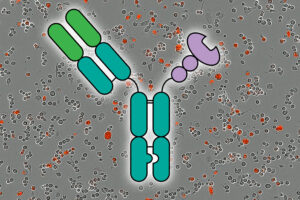
An international team of researchers has announced a groundbreaking advancement in gravitational-wave astronomy, detecting 128 new cosmic collisions involving black holes and neutron stars. This discovery, which more than doubles the number of known gravitational-wave events, marks a significant milestone in our understanding of the Universe.
The findings stem from the latest data release by the Laser Interferometer Gravitational-Wave Observatory (LIGO), Virgo Gravitational Wave Interferometer (Virgo), and Kamioka Gravitational Wave Detector (KAGRA) collaboration. This global network of gravitational-wave observatories has published the new Gravitational Wave Transient Catalog (GWTC-4.0), which includes data from the first nine months of the fourth observing run, conducted between May 2023 and January 2024.
Massive Cosmic Events
Gravitational waves, first detected in 2015, are ripples in the fabric of space-time caused by massive cosmic events such as collisions between black holes and neutron stars. Since their initial discovery, UK scientists have played a pivotal role in developing the technology and analysis techniques required to detect these faint signals.
The UK has been a long-standing contributor to gravitational wave science, supported by the Science and Technology Facilities Council and numerous institutions, including the University of Glasgow, the University of Portsmouth, and Royal Holloway, University of London. Researchers from these institutions have helped develop the ultra-sensitive detectors used in LIGO observatories and have led efforts to analyze the complex data they produce.
UK Contributions to Global Science
Thanks to recent upgrades, the detectors are now 25% more sensitive, allowing scientists to observe a much larger volume of the Universe and detect more distant and massive black hole mergers. Dr. Daniel Williams, a research fellow at the University of Glasgow’s Institute for Gravitational Research, who led the team performing the analysis, emphasized the significance of these advancements.
This new update really highlights the capabilities of both the international network of gravitational-wave detectors, and the analysis techniques which have been developed to dig very faint signals out of the data.
The 128 new gravitational wave events include the loudest signal ever recorded (GW230814), which provides evidence of black holes formed from previous mergers. This evidence offers clues about stellar evolution in dense environments and details of two black hole-neutron star collisions (GW230518).
Exploring the Nature of the Universe
The enhanced sensitivity of the detectors has not only increased the number of observable events but also improved the clarity of the measurements. This allows researchers to test Einstein’s theory of gravity with greater precision and explore the fundamental nature of the Universe. Each merger provides valuable data about the Universe’s expansion rate, contributing to efforts to refine the measurement of the Hubble constant.
Tessa Baker at the Institute of Cosmology and Gravitation, University of Portsmouth, and manager on this new Cosmology paper, expressed excitement over the findings.
It’s really exciting to bring over a hundred new gravitational-wave events into the public domain, after several years of quiet. These new events have allowed us to refine our measurements of how fast the Universe is expanding, also known as the Hubble Constant, arguably the most crucial and hotly debated number in current cosmology. We’ve also been able to show that gravity on large scales of the Universe behaves consistently with Einstein’s theory of general relativity. This means that the standard model of cosmology, along with its bizarre components like dark matter and dark energy, continues to be our best understanding of the Universe.
Looking Ahead
With new telescopes like the Vera Rubin Observatory coming online, the chances of detecting both gravitational waves and light from cosmic collisions are increasing. This multi-messenger approach, enabling the discovery of diverse cosmic mergers, could unlock even deeper insights into the nature of stars, black holes, and the evolution of the cosmos.
The GWTC-4.0 catalogue is available as a preprint and represents a major achievement in international scientific collaboration. As scientists continue to probe the mysteries of the Universe, these discoveries will undoubtedly pave the way for new breakthroughs in our understanding of the cosmos.






